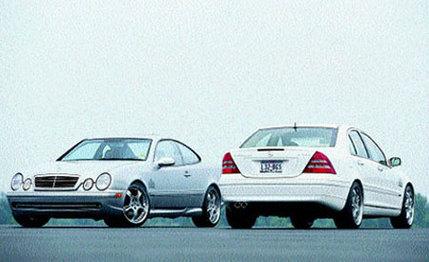
 Specialty File
Specialty File
Unless you regularly attend auto shows and SEMA-type events in Europe, you may not have heard of Kleemann A/S, but in many ways this company is to Mercedes-Benz cars what Lingenfelter Performance Engineering is to small-block Chevys.
The Danish firm has been hot-rodding Benzes for 15 years and has done the job well enough to earn Stuttgart's confidence, so, as does John Lingenfelter, the Kleemann guys get dealt in early when new engine developments come from the mother ship. (For example, Kleemann showed a supercharged 24-valve V-8 just as that engine was introduced in the '98 E430 car.) And the firm's reputation has been built on performance parts, not body mods—as has Lingenfelter's operation.
Better power through supercharging is Kleemann's MO, and the products that Kleemann USA of Colorado Springs is selling snuggle a twin-screw positive-displacement blower and intercooler into the 90-degree valley of any Mercedes V-6 or V-8. If the idea looks like a rip-off of a C32 AMG from Mercedes' in-house tuner, you should know that the Kleemann setup hit the streets first.
And there are significant differences between the AMG and Kleemann systems. AMG lowers the V-6 compression ratio from 10.0:1 to 9.0:1 and uses a Japanese IHI Lysholm-type compressor to force air at 14.7 psi of boost into the engine through a traditional air-to-water intercooler that looks like a miniature radiator. Kleemann, on the other hand, retains the stock compression ratio and employs a Swedish AutoRotor blower of the same type running at only about 7 psi of boost but uses an innovative Laminova intercooler (also Swedish) to cool the air. Lower charge-air temperature is Kleemann's silver bullet against engine detonation.
In this intercooler, water flows through four aluminum tubes 1.8 inches in diameter, each extruded with a large central tunnel and 18 small passages around the edges for good heat transfer. Aluminum fins ring these tubes, spaced just 0.01 inch apart, providing a surface-area-to-volume ratio that's about 47 percent better than that of a radiator-type cooler. Also, cooled water makes one straight shot through the Laminova intercooler, rather than zigzagging back and forth through smaller tubes. The company claims that at full power its cooler can pull about twice as much heat out of the charge air as can the AMG intercooler, with the same or less air-pressure drop across the intercooler.
The net result: about 50 percent more horsepower. The 3.2-liter V-6 in our Kleemann C32K produces 330 horsepower and 325 pound-feet of torque, up from 215 and 221, respectively, for the stock 3.2-liter, and just down from AMG's 349 horsepower and 332 pound-feet of torque. The 4.3-liter V-8 in our CLK43K makes 427 hp and 401 pound-feet, well above both the base 275 hp and 295 pound-feet and the 342 hp and 376 pound-feet generated by the CLK55 AMG's naturally aspirated 5.4-liter V-8.